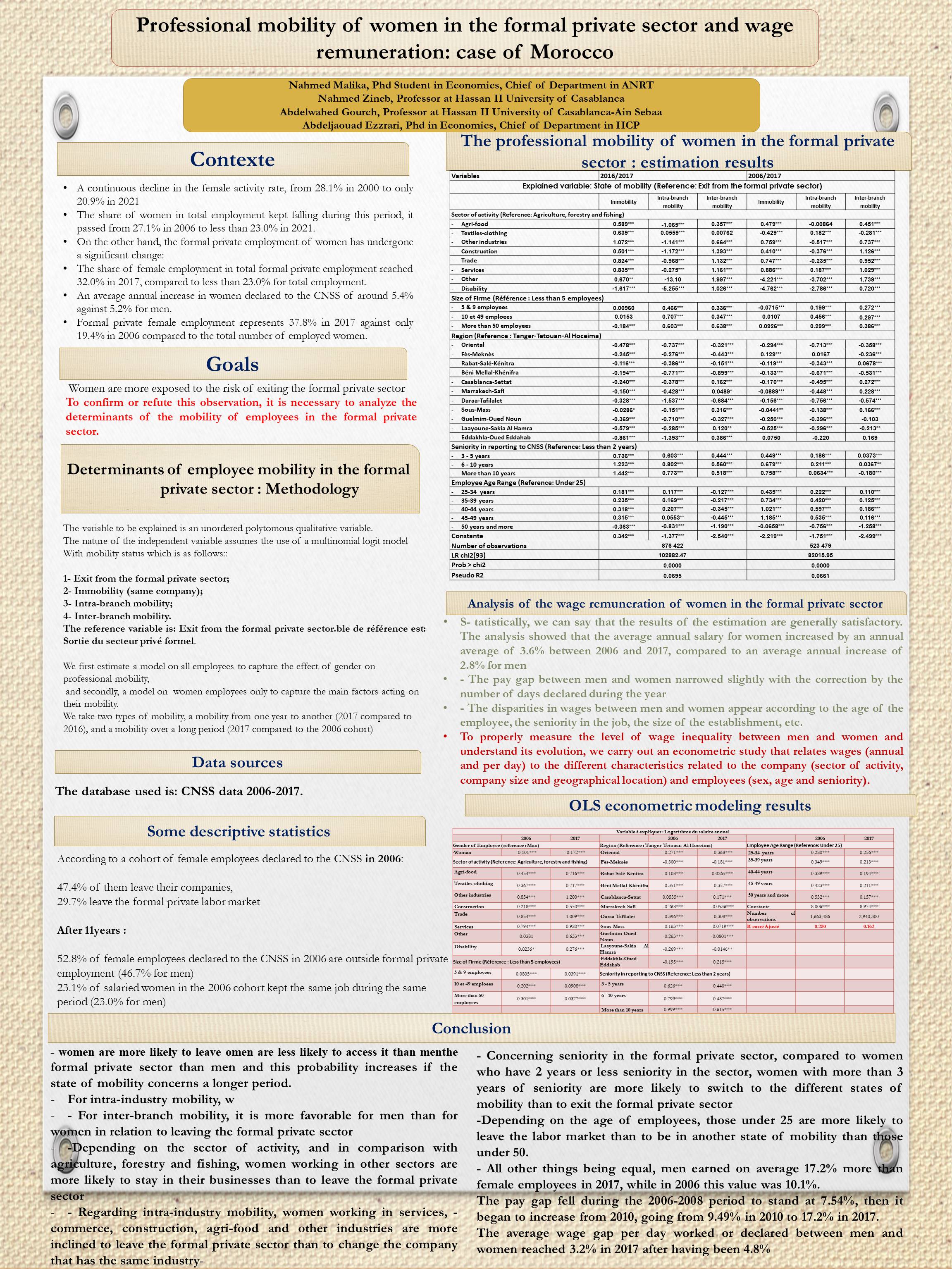Professional mobility of women in the formal private sector and wage remuneration: the case of Morocco
Conference
64th ISI World Statistics Congress - Ottawa, Canada
Format: CPS Poster
Keywords: data, employed,, logistic-regression, regression, wage discrimination, women, work-life

Abstract
Morocco, like many African countries, has an abundance of human resources, which can be a growth factor of crucial importance. These human resources are made up, among others, of women who, despite their number, are less likely than men to contribute actively to the labor market.
In 2021, the number of active women aged 15 and over reached 2.9 million, representing an activity rate of 20.9% compared to 70.4% for men. The female activity rate has continued to decline over the past two decades, falling from 28.1% in 2000 to 20.9% in 2021. This drop is mainly due to the increase in the duration of schooling for girls during this period.
In terms of employment, the female employment rate also fell during this period from 24.5% to 17.4% respectively. The structure of female employment shows that more than a third (35.7%) is a unpaid employment, generally in rural areas.
On the other hand, formal female employment accounts for nearly 30% of total female employment, the majority of which is in the private sector.
Formal female employment in the private sector represents more than 30% of total employment in this sector (CNSS, 2017). It is characterized by high annual mobility averaging around 32.0% during the period 2006-2017, compared to 30.0% for men.
How is female employment changing in the formal private sector in Morocco? Which sectors are the providers of female employment in Morocco? How does the professional mobility of women within and between sectors take place? What are the main determinants of their mobility? Is there inequality in terms of wage remuneration between men and women in the formal private sector in Morocco?
In this paper, we try to answer all these questions through a statistical analysis of the evolution of female employment in the formal private sector, according to the different characteristics of the company and the region. We push the analysis to understand the main determinants of professional mobility/immobility of women in the formal private sector in Morocco and we analyze the evolution of their wage remuneration according to their mobility situation in the sector. A comparative gender analysis would allow us to understand the sources of male/female inequalities in the private formal sector, in terms of jobs held and in terms of wage remuneration.
The data used in this work refer to the exhaustive file of declarations to the CNSS during the period 2006-2017.
Keywords: Female employment, professional mobility, male/female inequalities, gender wage discrimination, multinomial logit.
